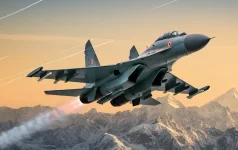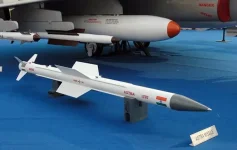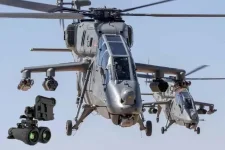- Views: 4K
- Replies: 15
The Indian Air Force (IAF) is preparing for a significant capability boost for its Sukhoi Su-30MKI fighter jets through the 'Super-30 Program'. This initiative aims to upgrade 84 of these frontline aircraft beginning in 2026.
Central to the upgrade is the installation of the domestically developed Virupaksha Active Electronically Scanned Array (AESA) radar, which uses advanced Gallium Nitride (GaN) technology, along with a state-of-the-art digital cockpit.
This program highlights India's push towards self-reliance in critical defence technologies under the 'Atmanirbhar Bharat' policy and seeks to maintain the IAF's air superiority edge.
The Virupaksha AESA radar is the core element of this enhancement. Developed by the Defence Research and Development Organisation's (DRDO) Electronics and Radar Development Establishment (LRDE), this advanced radar system employs GaN technology and features around 2,600 transmit/receive modules.
AESA radars represent a major advancement over older mechanically scanned radars, offering faster scanning, the ability to track multiple targets simultaneously, and greater resistance to electronic jamming.
Compared to the N011M Bars radar currently fitted on the Su-30MKI, the Virupaksha radar offers substantial improvements:
- Extended Detection Range:It can identify fighter-sized targets from 300 to 400 kilometres away, allowing pilots more time to react and engage threats.
- Lighter Weight: The new radar is expected to be 30-40% lighter, improving the aircraft's manoeuvrability and fuel efficiency.
- Efficient Power Use: GaN technology allows the radar to operate effectively without needing changes to the Su-30MKI's existing AL-31F engines, saving costs.
- Better Cooling: An advanced cooling system increases the radar's operational life and reliability during demanding combat situations.
- Clearer Targeting:It provides higher resolution imaging, improving the ability to identify targets and track multiple threats accurately, even those using stealth or electronic countermeasures.
This enhancement is particularly crucial for addressing the challenges posed by advanced stealth aircraft like China's J-20 and other potential fifth-generation fighters in the region.
Alongside the new radar, the Super-30 Program involves fitting the aircraft with a fully automated digital cockpit. This modern setup replaces traditional analogue dials with large multi-function displays, a wide-area head-up display (HUD), and voice command interfaces. These changes aim to simplify the pilot's tasks, reduce workload, and speed up decision-making during complex missions.
The cockpit will integrate seamlessly with other Indian-made systems, including mission computers and secure communication radios, enabling better coordination with other IAF assets in modern network-centric warfare. This comprehensive upgrade effectively elevates the Su-30MKI to a '4.5+ generation' fighter, ensuring it remains a potent platform well into the 2040s.
Manufacturing the Virupaksha radar involves a partnership between government and private industry. LRDE has shortlisted four Indian companies as potential Development cum Production Partners (DcPP): Astra Microwave Products Limited, Hindustan Aeronautics Limited (HAL), ICOMM Tele Limited, and Larsen & Toubro Limited (L&T).
These companies, chosen after technical assessments, will compete to secure the mass production contract based on cost, with the most economical bid winning. The first radar produced by the selected private partner is expected to begin trials in 2026. This collaboration aims to speed up production and strengthen India's overall defence manufacturing base.
The entire Super-30 Program is estimated to cost around ₹65,000 crore (approximately $7.8 billion). This significant investment reflects the Su-30MKI's importance as the primary workhorse of the IAF, with over 260 jets currently in service expected to fly until at least 2045.
Upgrading the initial batch of 84 aircraft is seen as vital for maintaining a credible defence posture against regional competitors, especially considering the deployment of fifth-generation fighters by China and potential acquisitions of similar advanced aircraft by Pakistan.
The project timeline appears to be on track. The Virupaksha radar's design is complete, and work on its various components is progressing. Prototype testing is anticipated shortly after 2025, followed by ground and flight trials using Su-30MKI test aircraft.
The full-scale integration of the new radar and digital cockpit systems is scheduled to commence in 2026, with HAL managing the upgrade process at its facility in Nashik.



